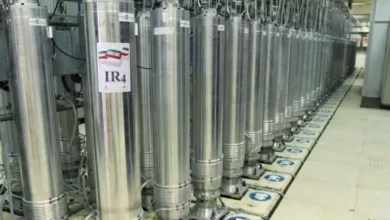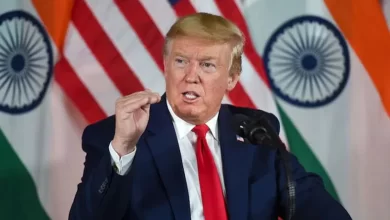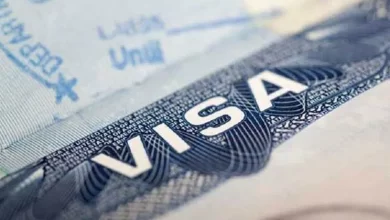South America: A hard road to unity
Brazilian President Lula da Silva’s push for more integration across the region will need to overcome major challenges.
Unlike other parts of the world, Latin America is free of war. Yet it is a region plagued by inequality, crime, corruption, drug trafficking and social upheaval. Political stability and strong democratic institutions are more the exception than the rule.
South America, in particular, never seems to stop moving from one extreme to the other, shifting from the political left to the right and back again, without addressing the social and economic demands responsible for moving the pendulum.
Such instability has made it difficult for the continent to form an influential bloc, despite estimates that it collectively represents the fifth-largest global economy.
Earlier this week, all 12 South American countries, represented by 11 presidents and Peru’s prime minister, gathered in Brasilia to give another crack at the elusive goal of continental integration. Spearheading the effort was Brazil’s President Luiz Inacio Lula da Silva.
“What he is trying to achieve is the unity of South America,” Lula’s chief adviser, former Foreign Minister Celso Amorim, told me.
Brazil’s Lula pushes for integration at South America summit
“I think it’s always been important, but it’s now even more important in a world which is progressively divided in blocs. I think, in a world like that, even a country like Brazil — which is very populous and has a huge economy — is not big enough alone.”
But while Lula is still considered the region’s most influential leader, many at Tuesday’s summit were not willing to follow his advice.
Lula had hoped to revive UNASUR, the South American bloc that he had helped create 15 years earlier during his first two terms as president. But ideological disputes eventually convinced more than half of its member countries to abandon the organisation.
“It’s better not to start from zero,” Lula said at this week’s summit, as he pitched reconvening UNASUR.
But he was unable to convince all of his peers who, in the end, chose to assemble a group with members from each country to work on a plan for regional integration over the next 120 days.
Lula had appealed to South American leaders to put aside their ideological differences and concentrate on common interests, including economic growth, energy production and environmental protection.
Venezuela’s Maduro meets Lula in Brazil as relations improve
But his decision to welcome Venezuela’s President Nicolas Maduro the day before the summit led to open criticism. In his remarks, Lula had dismissed the image of an “anti-democratic” Venezuela as a “narrative” promoted by Western countries and the media.
But Chilean President Gabriel Boric said that, as a left-wing president, he disagreed.
“It’s not a narrative construction. It is a reality. It is serious,” Boric said. He added that respect for human rights was “basic and important” for Chile, no matter the ideology of those who violate them.
Milestone for Maduro
For President Maduro, the meeting was an important milestone. For years, he had been isolated from his South American peers — Brazil, Colombia, Chile, Peru and Argentina, for example — after many chose not to recognise his re-election in 2018, opting instead to support an opposition government.
During hours of closed-door meetings at this week’s summit, Maduro faced direct criticism of his human rights record from at least two presidents, but he did not take up the glove.
“We have no problem sitting down to talk with any political force or president in a respectful, tolerant dialogue of unity in diversity. That is what we had here,” Maduro said when the meeting ended.
Colombia’s President Gustavo Petro, his Argentine counterpart Alberto Fernandez and Chile’s Boric — all left-wing figures — were among the majority who agreed that at no time in history has South America shown such economic potential.
It is home to the largest reserves of copper and the highly sought-after lithium used in rechargeable batteries. The region also has the potential to become the largest producer of green hydrogen and other sources of sustainable energy. And it has huge reserves of freshwater, rainforests and an increasingly — though not sufficiently — educated population.
Colombia hosts international conference to discuss Venezuela
But South America’s economic and political disparities have frustrated decades of attempts to create regional unions. UNASUR has not been the only bloc to flounder. MERCOSUR — a union between Argentina, Brazil, Paraguay and Uruguay — has also struggled amid internal disputes.
What is needed is more pragmatism, according to some experts. And the current immigration crisis in South America could help spur it.
More than seven million Venezuelans have left their homeland since 2015, according to the United Nations. If countries like Chile, Peru, Ecuador and Colombia want to repatriate undocumented Venezuelans and institute an orderly system of legal migration, some observers believe they will need Maduro’s cooperation.
Boric referred to cooperation with Venezuela to resolve the crisis at the Chile-Peruvian border.
“Together, with the governments of Peru and Venezuela, through a dialogue with Venezuela’s foreign minister, we were able to resolve this crisis and allow a Venezuelan aeroplane to return citizens of that country to their homeland,” said Boric.
Following the EU model?
Amorim, Lula’s adviser, pointed to the European Union as a model for how South American nations can proceed to build a new bloc, even with a diversity of political opinions.
“You have several political positions In Europe. You have governments of the centre-right. You have governments which one might say are even more right than centre-right. And you have the centre-left governments,” Amorim said. “And still, on some subjects at least, they are able to speak — if not with one single voice — at least in a coherent way.”
Lula’s dream of a united South America, however, is still a long way from success. But politicians like Amorim see hope in Europe’s example. The 12 countries of South America, after all, are much more culturally and linguistically similar than the members of the European Union.
“Of course, there will be different views,” Amorim said of a possible South American bloc. “But we have common interests in many respects. We have to work for our interests in a unified way. Because like that, we have more strength.”
There is a lot to be gained and no time to lose, Lula explained at the summit, as he referenced South America’s long history of being under the shadow of powerful economic and political powers, stretching back to the earliest days of colonialism.
“We cannot wait another 500 years in the margins,” he warned.







